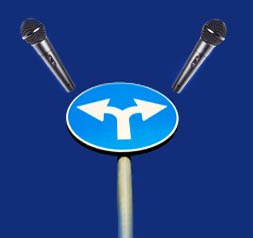
Ground Lifts
Not all grounds are created equal. In fact any time two pieces of audio gear are plugged into grounded outlets, their actual resistance to earth ground can vary quite a bit – even when the outlets are on the same circuit.
This can be due to the designs of the power supplies, the length of the cable from the outlet to the service box, poor or oxidized connections within the outlet boxes and service panels – anything that can affect the resistance in the electrical path to ground.
Even when using a transformer split, a problem can arise when the consoles’ grounds are connected directly to each other and here’s why: If console A “sees” a lower resistance to ground through its connection through the splitter to console B, then part of its AC ground return current will take that path of least resistance and AC current flows in the shields of the cable, through the splitter, and over to console B. This is called a ground loop.
Now, instead of the shields providing a defense against unwanted interference, they are carrying 60 Hz AC and radiating it directly into the signal conductors that they are supposed to be protecting! This is why ground loops produce hum.
Although it might solve the hum problem, you should NEVER use a three-prong ground lifter on the AC power cable of either console! This is not safe and can present an electrical shock danger to the people using the system.
A better solution to this problem is to break the ground connection of one or more channels between the consoles. This is accomplished by disconnecting each offending ground connection at one end (usually the splitter) and leaving it connected at the opposite end. The shield for that channel will continue to work because it is still grounded at one end.
Some technicians will clip all of the split grounds, leaving them permanently disconnected but it’s better to install ground lift switches for each channel or use lift adapters when necessary.
This way, the ground can normally be left connected but lifted if there’s a problem. Also, if the main console is unplugged or disconnected, the grounds can be left connected to the split console making it usable.
This is sometimes needed when churches or schools with large format main consoles decide to keep some of the mics split to a smaller, less complicated mixing console. This allows a less technically proficient person to operate the system when basic sound is needed for a small service or assembly.
Remember that a direct out or passive split will not pass phantom power with the ground lifted at either end and a transformer isolated split will not pass phantom power even with the ground connected at both ends
